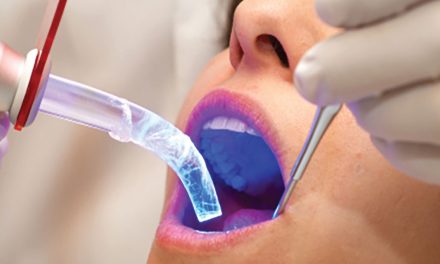The 3-step checklist for your dental practice website
Dental practices of all kinds, and especially those practicing cosmetic or aesthetic dentistry are well aware that that like any business, they need an online presence to cater for the needs of current patients and to reach potential patients. An easy-to-use website which provides for the differing information needs of current patients and potential patients, presented in a professional manner is a mandatory dental practice requirement. Satisfying the needs of existing patients and generating new patients is key to building a thriving dental practice. ‘Old school’ word-of-mouth referrals from satisfied patients is key to practice health, but relying on this alone leaves a dental practice vulnerable to a potential shortfall of patients. The solution is to build and maintain a strong, professional online presence with the goals being to educate and inform current and new patients, and to support a thriving practice.
Conduct a basic health check on your dental practice website to establish its health in three essential areas of: 1) Providing convenience to existing patients, 2) Its ability to be found by potential new patients, and 3) How easy to use the website is on desktop, tablet and mobile devices.
1. Your website should supply convenience for existing patients
As a dental professional, your practice(s) utilise the latest technology and developments that improve patient treatment and care. You regularly educate yourself on new clinical research findings, and you adapt and enhance your treatments accordingly. Likewise, you should utilise the latest, and emerging digital technologies to provide increased patient convenience via your website. This is best done firstly through the building and maintenance of a well-functioning and useful website. Give existing patients the following:
- The option and opportunity to book and manage appointments online. They should be able to choose to get appointment reminders by email, and ideally by text message. This not only reduces missed appointments, and therefore lost revenue, but also means patients are more likely to attend their appointments meaning better outcomes for their dental health.
- Provide patient information via secure online forms.
- Information about treatments that enable the patient to better understand their options.
- Practice information – dentistry is based on trust, so provide information about your practice team and their roles in providing patient care.
2. Your website should be set up to help new patients to find your dental practice
Relying on repeat business and/or word-of-mouth exposes your practice(s) to financial vulnerability. Active promotion is needed to maintain a source of potential new patients, and the fundamental requirement to active promotion online is achieved with a website that is well optimised for search engines. This essentially means that search engines can find your website, can establish that by virtue of the useful content on your website, will consider it useful to potential patients when they search for new dental services, and therefore will rank(show) your website as a valuable website for dental searches. The goal is to appear as high as possible in the search rankings, ideally position 1-3 on the first page of search results. There are several search engines in Australia: Google, Bing, DuckDuckGo and Yahoo, it is helpful to know that Google makes up more than 94% of Australian search volume1. Google is followed by Bing with almost 4% showing its domination and therefore importance as a search engine.
Optimising your website for search simply means following the steps to maximise the opportunity for your website to be found and rated highly by Google in order to appear as high on the search results as possible. The holy grail is positions 1-3 on the first page of search results, and search engine optimisation is a marketing specialty that focuses on this goal. We will discuss actions that seek to improve your websites ranking in more detail in future posts, but for now, the key action for attracting potential new patients using your website, in addition to those listed in item 1 above, is to improve your local ranking. This requires the creation of a page on your site that includes information about your dental practice’s location, how to get there and perhaps a map showing its location. This will help Google to find your website and work out it is relevant for potential patients who are searching online for ‘dentist near me’ or similar local searches.
3. Your website must be viewable on a desktop, tablet or mobile device
The proliferation and popularity of web-enabled devices means that your website needs to be viewable on a variety of screen formats. A website that is not mobile-enabled, i.e., that does show properly on a tablet or mobile phone is downgraded in search by Google, meaning your site is less likely to be found. And if it is not mobile-optimised, the patients’ experience of using your site on smaller devices will be greatly reduced, resulting in patients and potential patients either not visiting your site or clicking away to another more user-friendly website. It is easy to check how your website renders on a tablet or phone, and if it does not, you should be aware that this is compromising your ability to serve existing patients and attract new patients.
The inhouse web specialists at The Dental Review are on hand to advise you about either building an attractive and professional website at a very affordable price, or optimising your current website with the aims of better serving your current patients and generating new patients. Contact us today on 1800 118 991 or editor@thedentalreview.com.au
PO Box 2345, Parramatta NSW 1750 Australia
T: 1800 118 991
E: editor@thedentalreview.com.au

















